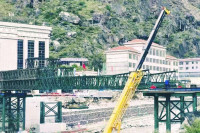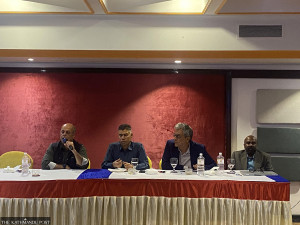Money
IRRI to hand over solar bubble dryer to Nepal
ThePhilippines-based Internati-onal Rice Research Institute (IRRI) will be handing over a solar bubble dryer, which allows immediate drying of grains and seeds, to the Nepal government on Monday.
ThePhilippines-based Internati-onal Rice Research Institute (IRRI) will be handing over a solar bubble dryer, which allows immediate drying of grains and seeds, to the Nepal government on Monday.
The machine dries grains and seeds to the correct moisture content after they are harvested thus minimizing fungal growth and infestation. It is expected to prevent post-harvest loss in grains that farmers in Nepal have been facing for a long time.
Sun drying is the most common method used in Nepal to dry grains by spreading them in the sun. However, when rain delays sun drying, the quality of the grains deteriorates. This leads to damage that reduces the market value of the commodity.
The solar bubble dryer can dry up to 1 tonne of paddy or other types of grains at a time. In Nepal, farmers have been suffering from post-harvest loss, particularly during the spring paddy or ‘chaite dhan’ harvest.
According to Bhaba Prasad Tripathi, senior associate scientist at IRRI-Nepal, farmers have been losing 10-30 percent of their paddy during the harvest period. Losses are highest in spring crops as they are harvested during the wet season, June to July.
“The dryer will be the solution for farmers,” Tripathi said. The machine that costs up to Rs400,000 will be gifted to the Agricultural Engineering Division of the Nepal Agricultural Research Council (NARC). The division will produce the technical manpower after testing the equipment. The private sector can also use the machine.
“It is costly, but it can last up to 14-15 years,” said Tripathi. According to a World Bank
study, food drying and storage in the immediate post-harvest period are the main reasons behind food loss. The tunnel-shaped solar dryer has enough space to significantly improve grain drying.
A ventilator at the front of the unit pushes the vaporised moisture out. Moist air exits through an exhaust port at the back. According to Tripathi, the machine can be used for drying maize, wheat and other grains.




 17.12°C Kathmandu
17.12°C Kathmandu














